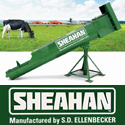 |
 |

|
|
|
Minnesota Ag News Headlines |
 |
Anglers Can Help with Important Mille Lacs Studies
Minnesota Ag Connection - 05/31/2016
Anglers fishing Mille Lacs Lake can help the Minnesota Department of Natural Resources collect essential data needed for improving walleye fishing in the near future.
"Although this year's regulations don't let anglers keep any walleye, catching them and sharing information about your catch provides invaluable data that helps us manage the fishery," said Don Pereira, DNR fisheries chief. "Walleye catch rates are pretty good so
far this spring, and we ask anglers to work with us to help ensure future fishing can be even better."
Anglers can lend a hand by participating in the annual creel survey that is done to monitor the walleye harvest. DNR creel clerks interview lake anglers on a regular schedule throughout the open water fishing season. They ask anglers about what fish are caught
and their size, and count the number of individual fishing trips to estimate total hours of fishing on the lake.
The data provided by anglers is essential to helping the DNR estimate total fishing effort and walleye survival rates.
Additionally, DNR creel clerks this year will ask Mille Lacs anglers how their fish were caught and whether they used artificial or live bait. That information will inform a new two-year project looking at how many walleye do not survive after being caught and
released, referred to as hooking mortality.
The hooking mortality study is a cutting-edge project to catch and release 1,500 walleye of specific sizes throughout the fishing season and under a variety of environmental conditions and fishing methods.
Other such studies have been done in Minnesota and across the country, but none have been as intensive as the Mille Lacs study, which includes a focus on bait types and additional detail on angling methods.
Anglers on the water might actually see aspects of the hooking mortality study. It will be done from boats designated with special flags or on special launches. When a walleye is caught, the boat will signal a nearby DNR shuttle boat via marine radio or air horn
blast. Walleye will be immediately transferred to the shuttle boat so the DNR can take the fish to a nearby net pen.
Walleye will be kept in net pens for five days to determine how many survive after being caught; surviving fish will then be released. Data about each fish and how it was caught will be recorded. Next year, the DNR will repeat the catching and data collection
with 1,500 more walleye.
"Mille Lacs is a changing lake and some angling practices have changed," Pereira said. "Angler help is essential to helping us secure the future of Mille Lacs as a key walleye fishing destination in our state."
For more information about the lake and steps the DNR is taking to manage it, visit the Mille Lacs Lake home page at www.mndnr.gov/millelacslake.
Other Minnesota Headlines
|
|
 |


|
 |
|
Copyright © 2024 - Farms.com. All Rights Reserved. |
 |
|